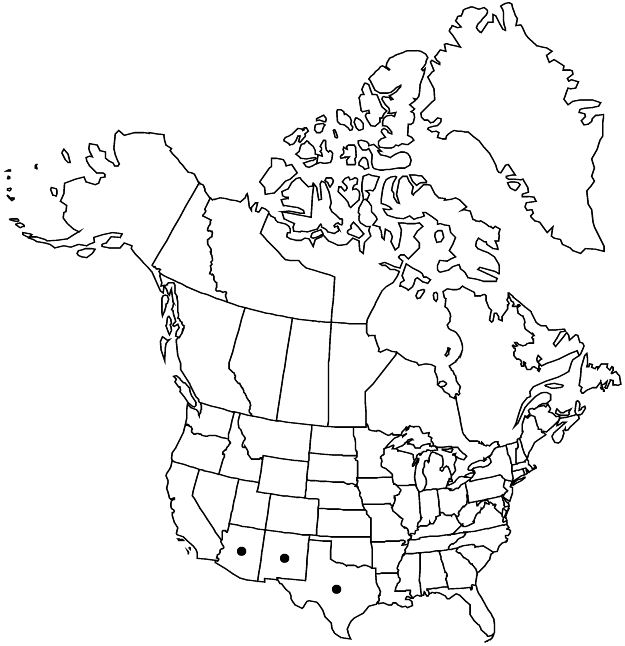Mentzelia asperula
Contr. U.S. Natl. Herb. 16: 148. 1913.
Plants annual, without caudices or tubers. Stems erect, to 25 cm. Leaves: petiole to 12 mm (proximal leaves), absent (distal leaves); blade usually ovate to hastate, or smallest distal elliptic or lanceolate, basally lobed or unlobed, to 4.5 × 3.5 cm, base cuneate or obtuse to truncate, margins serrate, apex acute. Pedicels (fruiting) 1–3 × 2 mm. Flowers: petals orange, 5–8 × 3–5 mm, apex cuspidate, hairy abaxially at apex; stamens 10–20, 5–8 mm, filaments monomorphic, filiform; style 3–5 mm. Capsules subcylindric to clavate, 12–25 × 3–5 mm, base tapering gradually, capsule and pedicel not well-differentiated. Seeds (7–) 8–10 (–12) per capsule, pyriform, without transverse folds. 2n = 20, 40.
Phenology: Flowering Aug–Oct.
Habitat: Rocky limestone or igneous slopes, arroyo bottoms, grasslands, oak woodlands.
Elevation: 0–1800 m.
Distribution

Ariz., N.Mex., Tex., n, c Mexico
Discussion
Populations consistent with the form and geographic region of the type specimen of Mentzelia asperula (collected in southwestern New Mexico) have been recovered in two clades of sect. Mentzelia. In one clade, M. asperula is closely related to M. isolata; in the second clade, it is closely related to M. gypsophila B. L. Turner of northern Mexico (J. Grissom 2014). The polyphyly of M. asperula likely represents convergence on rapid developmental times and small, self-fertilizing flowers. In southeastern Arizona, M. asperula can be difficult to distinguish from M. isolata; see the discussion of the latter for more information.
Selected References
None.